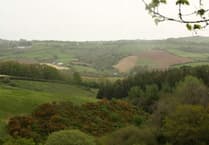IT’S drinks all round after the biggest whisky distillery outside Scotland was given the ’drams away’ by Dartmoor planners.
Some fierce local opposition failed to sink Princetown Distillers’ major application to build the visitor-friendly facility next to the prison town’s Station Road car park.
A rearguard action to save the demolition of the world’s first jet-powered electricity generating station - and the more architecturally attractive and older Pressed Men station on the 1,700 square metres site - failed.
The Dartmoor Society, which wanted more time to be given to discuss ways of preserving the features, maintained both were of ’key historical interest.’
It had been argued that Princetown’s stock of heritage assets were dwindling to nothing after already losing the railway station, the Town Hall and Bolt’s Stores.
But members of the national park authority’s development management planning committee agreed the buildings, dating from 1924 and 1959, should be fully recorded and archived for posterity.
Nearly 40 letters of objection were lodged with the authority against six of support.
Princetown Parish Council backed the proposal which will provide 22 full-time jobs, spin-off employment and a tourism boost at a time when the local community was reeling from numerous business shutdowns as well as the proposed closure of the famous jail.
Opponents argued such a major edge-of-settlement application should be rejected out of hand because it did not feature any housing provision, and it conflicted with major policies.
Suzanne Davies, in a direct appeal to the committee at Friday’s meeting in Bovey Tracey, said Princetown would be transformed from a historic rural village to an industrial estate.
The distillery’s architect, Gareth Roberts, said the elevated position of the building - the highest of any such facility in the UK - would guarantee a high quality product.
It would also enhance food and drink tourism in the area and create jobs which locals could apply for.
And a 300-metres Devon hedge around the site would ensure a minimal impact on the local landscape.
He defended the building’s centrepiece ’pagoda’ tower, which was an established feature for drying malt.
Committee member Dr Ian Mortimer wanted the application deferred for a month to see what could be done to preserve the two buildings due for demolition.
’Princetown is losing more and more of its identity. It needs to be reminded of its interesting story,’ he said.
David Lloyd agreed, saying: ’We should be looking to enhance and conserve. We have to preserve our local heritage. This application is not doing that - but we can do it. We can do better than this.’
Members heard that the buildings had not been listed for protection because they had been stripped of their original working parts.
Philip Sanders admitted he was originally in two minds about the application. His first reaction on seeing the plans was to utter: ’Oh, my goodness!’
’Now I’m minded to move the recommendation as set out,’ he said.
The committee agreed. Mr Lloyd voted against while Dr Mortimer abstained.





Comments
This article has no comments yet. Be the first to leave a comment.